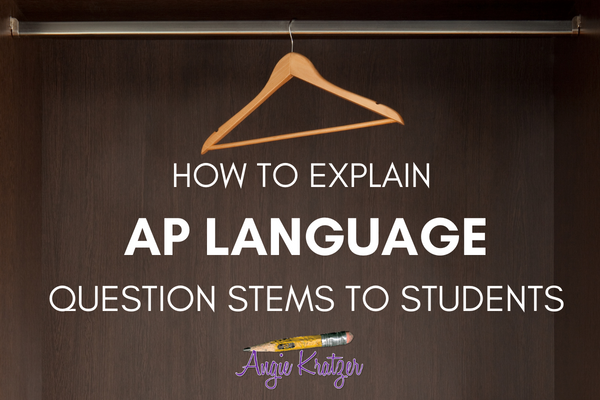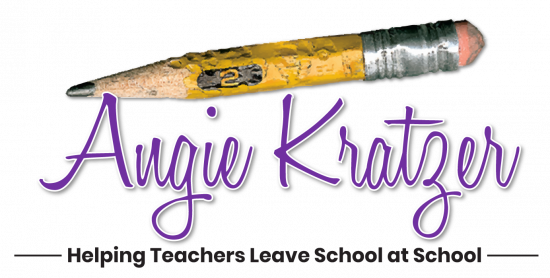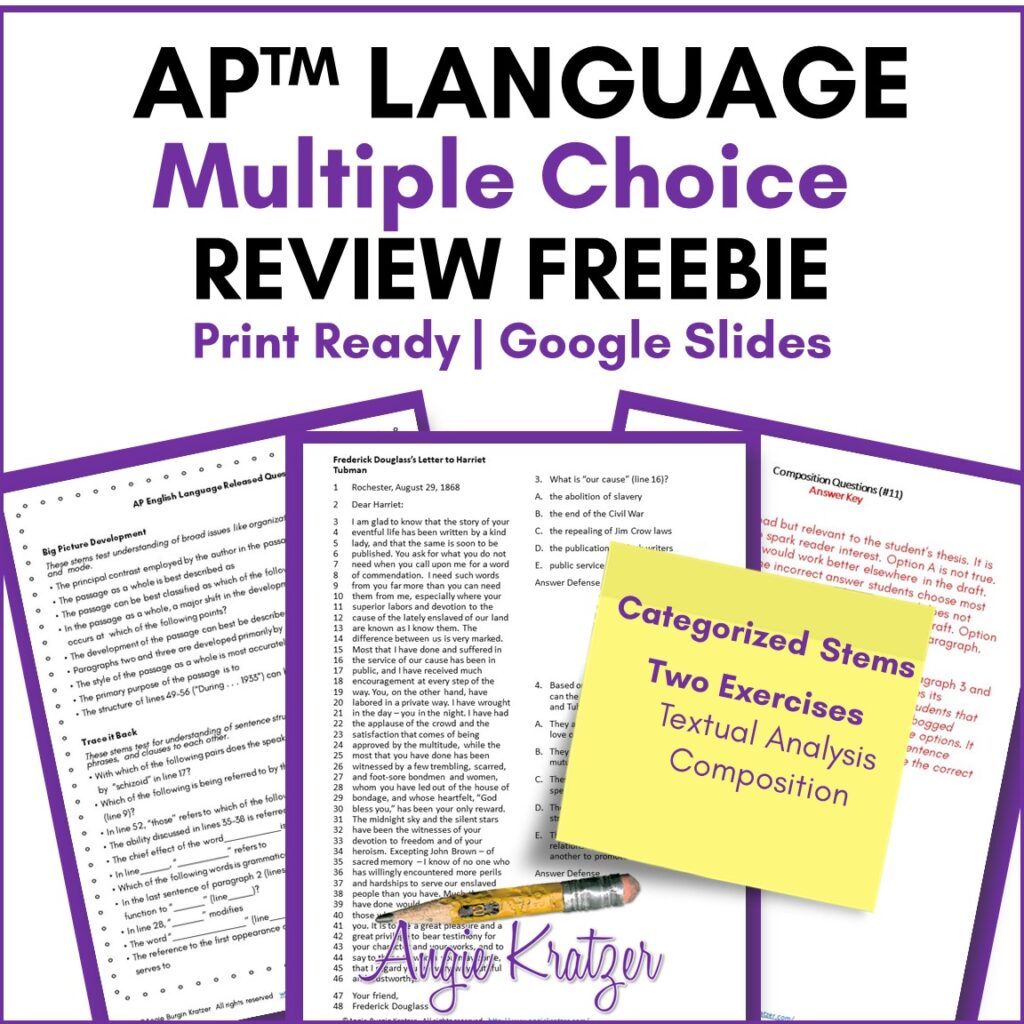Let’s talk about closets. AP English Language teachers know that I love a good metaphor, and I throw them around willy nilly when it comes to multiple choice.

Rods and Hangers
In my small bedroom closet, I have one four-foot rod. I’m a clothing minimalist (mostly because no one sees me from the waist down these days), so my black pants, jeans, shirts, and blouses all fit. Because I don’t want to pick my clothes up off the floor, I have nice felt hangers that grip.
Now imagine a teenager’s closet. Typically, there would be a pile of clothes at the bottom covering what may or may not be something that once was a pizza crust. I tell my students to approach a reading passage with an empty brain closet. Take everything out of it for a second. Now put in a rod. The rod is the quickest of scans of the first sentence of each paragraph. Now hang those nice felt hangers. The hangers are the question stems. I need something in my brain closet on which to hang my reading, so I need to quickly skim the stems before reading. (Outside of a testing context, I have students add more hangers with pre-reading vocabulary and background knowledge.)
Labeled Tubs
In my bathroom closet at home, I have wire shelves and clear tubs, and each tub has a label–teeth, eyes, cold remedies, shoe polish, tummy issues, etc. Everyone in my household knows that all personal care items are in that closet, but to reduce frustration and save time, I have added a layer of organization. (Don’t be too impressed; most members of my household struggle mightily with ADD, and we have learned through trial and error that the fewer steps, the better.)
On any test of reading skills, students will be asked to do just one of two things in a question stem–answer a question or finish a sentence. We all know this fact, but what if we could equip students with one more layer of knowledge about what to expect of a question stem? We would reduce frustration and save time.
Question Stem Groupings
I put AP Lang question stems into the following labeled tubs:
- BASIC COMPREHENSION: These stems test students’ basic understanding of the details in a passage.
- BIG PICTURE DEVELOPMENT: These stems test understanding of broad issues like organization, tone shifts, overall style, and mode.
- TRACE IT BACK: These stems test for understanding of sentence structure and the relationship of words, phrases, and clauses to each other.
- RHETORICAL FUNCTION: These stems test the students’ rhetorical analysis skills, the ability to break down the reasons and author chose a particular strategy to communicate his or her purpose to the audience.
- INFERENCE: These stems test students’ ability to apply background knowledge to unfamiliar text and read between the lines.
- TONE AND ATTITUDE: These stems test students’ ability to recognize an author’s feelings toward her or his subject.
- IDENTIFICATION: These stems test students’ ability to recognize the use of specific rhetorical devices such as extended metaphor and irony.
- DOCUMENTATION: These stems test students’ understanding of a wide range of research skills. Footnotes, end notes, and in-text citations are fair game.
- PARAGRAPH-LEVEL AND SENTENCE-LEVEL STRUCTURE AND REVISION: These stems test students’ understanding of conventional sentence structure, logical placement of ideas, and a variety of revision strategies.
Want to see how I group the AP Lang stems? I’ve taken years’ worth of released questions, cross-checked them with changes to the exam, and grouped them using the categories above. You can get that list HERE. (You’ll be subscribing to my email list, but feel free to unsubscribe any time.) I’ve also included a few practice exercises you might use as bell ringers.
Why It Matters
It’s about feeling like they have some control. Imagine being blindfolded and walked into the front door of a strange house and told to find your way to the back door within five minutes. You know the house is in a cookie-cutter neighborhood, but you’ve never seen any of the five floor plans used. You would eventually find your way, but imagine how much more confident you would feel if someone showed you the blueprints of the five floor plans you might encounter.
We can help students become better readers, but we can also help them tackle distractors and know what to expect with stems.
Now What?
If you’re convinced that students need to be exposed to stem structures, there are so many things you can do with them. Here are a few ideas:
- Create a sort with the stems in strips. Give students the categories and have them place the questions stems in the right places.
- Once students have access to the list of stems, have them choose and complete ones that would work with a passage.
- Use stems as bell ringers and lesson summarizers.
- Frame test questions using the AP Lang stems.
How about a little more help?
Grab this multiple choice review freebie and help your students better understand question design. You’re getting a list of categorized stems (with student-friendly labels) and two practice exercises (with their teacher guides!).


